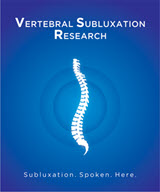Foundation for Vertebral Subluxation Responds to Canadian Pediatric Society's Attacks Regarding Chiropractic Care of Children

The Canadian Pediatric Society (CPS) recently attacked the chiropractic profession stating that: “Parents should be made aware that there is a lack of substantiated evidence for the theory of subluxated vertebrae as the causality for illness in children.” This negative and completely false comment along with several others by chiropractors who make a living testifying against chiropractors was spread through the Canadian media and various social networks causing outrage amongst practicing chiropractors and evoking fear in the minds of parents who have trusted the health of their children to chiropractors.
According to Matthew McCoy DC, MPH Vice President of the Foundation for Vertebral Subluxation "We live in the era of so called 'Fake News' and this is a great example of that. It's one thing to hold the chiropractic profession accountable for issues related to safety and effectiveness since all health care professions should be held accountable in this fashion. But stating that there is no evidence for vertebral subluxation is akin to stating that dental caries do not exist. Its laughable and they should be embarrassed by it."
The concept of vertebral subluxation has a rich literature and research base going back to the time of Hippocrates with the earliest English definition arising in the late 1600's.
The problem is not a lack of research or science supporting the central theory of the chiropractic profession, the problem is a lack of understanding by the medical community of the paradigm within which chiropractors manage their patients and vertebral subluxation.
Much of healthcare is mired in the pathogenic model of disease and treatment and increasingly patients are seeking out other forms of healthcare like chiropractic that do not just focus on naming and treating the disease. Instead the focus is on supporting and nurturing the inherent recuperative powers of the body towards health. This type of health care is known as "salutogenic" and such care seeks to support human health and well-being.
"This is a major source of confusion amongst traditional medical providers since they are so focused on naming and treating the symptoms and diseases people come to them with" stated Christopher Kent DC, JD President of the Foundation for Vertebral Subluxation and Director of Evidence Informed Practice at Sherman College of Chiropractic in Spartanburg, South Carolina.
Kent suggests that since medical providers are trained to think and practice this way, and its how they get paid, that they have nothing substantial to offer a patient who comes in and says "I want to be healthier so what can you do for me?"
Kent explained that when it comes to questioning whether there is research to support any health care intervention the first question that needs to be answered is "What level of evidence are you willing to accept?"
Research shows that the vast majority of medical interventions are unsupported by scientific evidence yet medical doctors still practice medicine and patients go to them for their treatments every day.
Instead, decisions regarding health care should be patient centered and evidence informed meaning that while the health care provider should consider any research that applies, they must also consider what the patient's values are and whether or not the research even applies to their particular case. Then the doctor and the patient decide together whether or not a given intervention is right for them or their family. This is truly patient centered care.
McCoy added "What the Canadian Pediatric Society is doing is engaging in logical fallacies. Since they live in a big glass house they really shouldn't throw stones considering that the facts are that they are the third leading cause of death every year. Because they do not want to deal with that and lose their cultural authority the CPS is engaging in scapegoating and using the chiropractic profession to misdirect the blame for their failures."
On the other hand what chiropractors do is minimally invasive and typically nothing else but their hands are used to gently ease any obstruction to the functioning of the patient's nervous system. Since the nervous system controls and coordinates all functions of the body it is important to be sure it is functioning as best it can with no obstructions no matter the disease afflicting the patient.
According to Kent "This is where the confusion comes in. Chiropractors are not treating this or that disease. They are checking to see if the patient has vertebral subluxations which obstruct the nervous system and if so they make an adjustment to the spine to remove the obstruction and from that point on its up to the person's body to do the healing."
This is the salutogenic approach to health and most likely seems quite foreign to a typical medical doctor trained to diagnose and treat symptoms and disease with sometimes dangerous drugs and surgeries.
McCoy added "While its understandable that this is confusing to them, the burden is also on them to get up to speed with the science and research which is light years ahead of their medical practice where much of what they are doing is no different than what was done 100 years ago. They are on the wrong side of science and history on this and they should be held accountable."
The following is a Policy Statement on Vertebral Subluxation from the Foundation for Vertebral Subluxation.
The Foundation for Vertebral Subluxation holds that the unique role of the chiropractor is separate from other health disciplines and that the professional practice objective of chiropractors may be limited to the analysis, correction or stabilization of the subluxation.
State laws, the federal government, international, national and state chiropractic organizations and the Association of Chiropractic Colleges all define the unique and non-duplicative role and responsibility of chiropractic as focusing particular attention on the subluxation and its resultant compromise of neural integrity.
The use of subluxation as a rationale for care is supported by protocols that are safe, efficacious, and valid. The literature is sufficiently supportive of the usefulness of these protocols in regard to chiropractic examination and analysis.
The chiropractor uses a variety of procedures to assess the vertebral subluxation in order to determine its presence and arrive at an impression of its location, character, type, and chronicity.
Management of subluxation from a vitalistic perspective is applicable to any patient exhibiting evidence of its existence regardless of the presence or absence of symptoms and disease.
Therefore, the determination of the presence of subluxation may stand as the sole rationale for care. Nothing in this position statement absolves the chiropractor from knowing the limits of his or her authority and skill, and from determining the safety and appropriateness of chiropractic care. The chiropractor has a duty to disclose to the patient any unusual findings discovered in the course of examination, and may collaborate with other health professionals when it is in the best interests of the patient.
###
Contact Information
Matthew McCoy DC, MPH
vertebralsubluxation@gmail.com
https://www.vertebralsubluxation.org
ABOUT Foundation for Vertebral Subluxation
The mission of the Foundation is to advocate for and advance the founding principles and tenets of the chiropractic profession in the area of vertebral subluxation through research, education, policy and service.
Blogs
- The Chiropractic Cartel: A Look Back at Bias in Accreditation and its Imact on Today's Profession
- Inside Montana's Chiropractic Monopoly: ACA & MCA's Brazen Board Takeover
- Concerns Grow About Control of the NY State Chiropractic Board by the ACA - Use of X-ray in NY Under Threat
- Reproductive Health Information and Chiropractic Care: Navigating New Privacy Regulations
- Navigating Substance Use Disorder (SUD) Consent: What Chiropractors Need to Know














